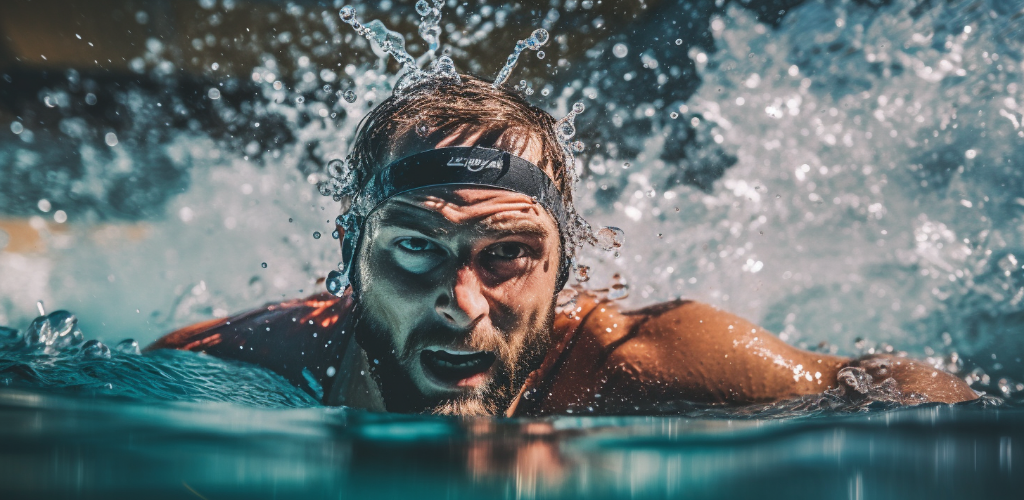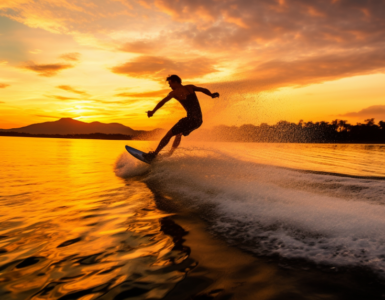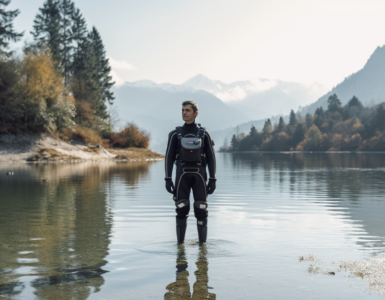For water sports enthusiasts, mastering the freestyle front crawl technique is a game-changer. This powerful and efficient stroke is the cornerstone of many water sports, offering a blend of speed and endurance that is tough to beat. In this blog post, we’ll be providing practical tips and detailed descriptions of the various parts of the technique, allowing you to improve your performance in the water.
Understanding the Basics of Freestyle Front Crawl
Before we dive into the specifics, let’s get a handle on the basics of the freestyle front crawl. Unlike other swimming styles, such as the breaststroke or butterfly, the freestyle front crawl is characterized by its continuous arm movement and the alternating breathing pattern. The primary body positions involve a straight spine, a horizontal body position, and a strong, steady kick. Synchronization is crucial in this style, with your arms and legs working in harmony to propel you through the water.
Ever wondered why swimmers seem to glide effortlessly when using this technique? That’s because the freestyle front crawl, when performed correctly, minimizes drag and maximizes propulsion. It’s all about efficiency and rhythm, my friends!
Importance of Freestyle Front Crawl in Water Sports
So why should you invest time in mastering the freestyle front crawl? Well, for starters, it’s the fastest swimming style, making it the go-to choice in competitive swimming and triathlons. The front crawl allows you to maintain a high speed for extended periods, thanks to its efficient use of energy.
But it’s not just about speed. The front crawl also promotes better breathing control and a full-body workout. Whether you’re a professional athlete or a recreational swimmer, these benefits can significantly enhance your performance in the water. So, ready to dive in?
Breaking Down the Freestyle Front Crawl Step by Step
Let’s take a closer look at the freestyle front crawl technique. By breaking down the process into manageable steps, we can focus on each part individually, making it easier to understand and master.
Beginning Position and Entry
First things first, the initial position. Your body alignment is crucial here. You should be lying flat on the water, facing down. Your body should be as straight as a line from your head to your toes. Sounds simple, right?
Next is the entry. This is when you reach forward with one arm and enter the water. Your hand should enter the water first, followed by your arm. Remember, your arm should be fully extended and close to your head. Can you imagine the streamline effect this creates?
The Pull and Stroke
Now, let’s talk about the pull and stroke. The arm motion is a significant part of the propulsion in the water. After your hand enters the water, pull down and back with your hand and forearm, propelling your body forward. Sounds like a lot of work for your arm, doesn’t it? But trust us, it’s worth it!
As for the stroke, it’s all about the timing. As one arm is pulling in the water, the other should be recovering above water. This alternating motion is what keeps you moving forward. It’s like a well-coordinated dance in the water, don’t you think?
- Step 1: Align your body flat on the water, facing down.
- Step 2: Reach forward with one arm and enter the water, hand first.
- Step 3: Pull down and back with your hand and forearm.
- Step 4: As one arm pulls in the water, the other recovers above water.
Common Mistakes and How to Avoid Them
Even experienced swimmers can make mistakes while performing the freestyle front crawl technique. But don’t worry, we’ve got you covered. Here are some common mistakes and how to avoid them.
- Not rotating your body: Remember, you’re not swimming flat in the water. Rotate your body along the spine as you swim. This will help you swim more efficiently.
- Ignoring your legs: Your legs play an essential role in maintaining your balance and speed. Don’t forget to kick!
- Incorrect breathing: It’s easy to fall into the habit of holding your breath or not exhaling fully. Try to exhale completely before you inhale.
- Poor timing: Remember, as one arm pulls in the water, the other recovers above water. Don’t rush the stroke!
Tips to Improve Your Freestyle Front Crawl
Looking to take your freestyle front crawl to the next level? No worries, we’ve got you covered. Improving your front crawl is not just about swimming more laps. It’s about focusing on specific aspects of your technique and doing the right training drills. Here are some tips that can help you enhance your efficiency and speed.
| Tip | Description |
|---|---|
| Focus on Your Body Position | Try to keep your body as flat as you can to reduce drag. Your body should be lying flat on the water surface with your spine and hips aligned. |
| Improve Your Kick | Work on your kick to ensure it’s effective and efficient. A good kick will help keep your body position high and reduce drag. |
| Train with Drills | Drills break down the stroke into manageable parts, allowing you to focus on one part at a time. This helps improve your overall technique and efficiency. |
| Master Your Arm Entry | Your fingertips should enter the water first, followed by your hand and then your forearm. This reduces resistance and sets up a good pull. |
| Optimize Your Pull | Pull straight back with your palm facing behind you. This creates a powerful pull and propels you forward. |
Breathing Techniques in Freestyle Front Crawl
Did you know that your breathing technique can significantly affect your swimming efficiency and speed? That’s right! When it comes to freestyle front crawl, breath control plays a major role. Inefficient breathing can lead to early fatigue, slower speeds, and can throw off your stroke rhythm.
So, when should you inhale and exhale during the stroke? Ideally, you should exhale underwater during the arm recovery and inhale quickly as your arm exits the water. Remember, the goal is to maintain a continuous breathing cycle and avoid holding your breath at any point. So, keep practicing your breathing technique to master it – it’s the key to a successful freestyle front crawl.
Ready to get started? Now you have some helpful tips and breathing techniques to enhance your freestyle front crawl. Remember, consistency is key, so keep practicing and you’ll see improvements in no time!
Equipment to Enhance Freestyle Front Crawl
Are you looking to take your freestyle front crawl to the next level? If so, you may want to consider adding some specialized equipment to your swim practice. Just as a golfer needs their clubs or a cyclist their bike, a swimmer can greatly benefit from the right tools. But what kind of equipment are we talking about? Let’s dive in!
First off, let’s talk about swim paddles. These are flat devices that you wear on your hands during swim practice. They increase the surface area of your hands, allowing you to pull more water and improve your strength and technique. However, it’s important to use them correctly to avoid shoulder strain.
Next up, we have pull buoys. These are small, lightweight devices that you place between your thighs. They help you focus on your arm stroke by immobilizing your legs, which can be especially beneficial for those working on their freestyle front crawl technique.
And then, there are swim fins. Designed to fit on your feet, they help to increase your speed and body position in the water. They can also be a great tool to improve your kick technique and ankle flexibility.
The Role of Stretching and Strength Training
Did you know that incorporating stretching and strength training routines into your regular exercise regimen can contribute significantly to better performance of the freestyle front crawl technique? Yes, it’s true!
Stretching is key to improving your flexibility, which is essential for a smooth and effective freestyle front crawl. Regular stretching can help you achieve a longer stroke, reduce muscle tension, and prevent injuries. It’s particularly important to focus on the shoulders, back, and hip flexors – the primary muscles used in the freestyle front crawl.
On the other hand, strength training can help build the muscle power necessary for a powerful stroke. Exercises that target the shoulders, arms, core, and legs can all contribute to a stronger freestyle front crawl. But remember, it’s crucial to maintain a balanced workout routine – don’t just focus on one area of the body!
Final Thoughts on Mastering Freestyle Front Crawl
And there you have it! We’ve covered a lot of ground in this post, from the basics of the freestyle front crawl to tips for improving your technique and the role of equipment and exercises. Remember, mastering the freestyle front crawl doesn’t happen overnight. It takes time, patience, and lots of practice.
But with persistence and the right approach, you can certainly enhance your freestyle front crawl technique. So, why not take the plunge and start incorporating some of these tips into your swimming routine? After all, every great swimmer had to start somewhere, right?




